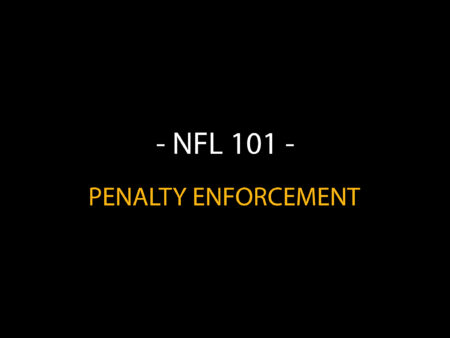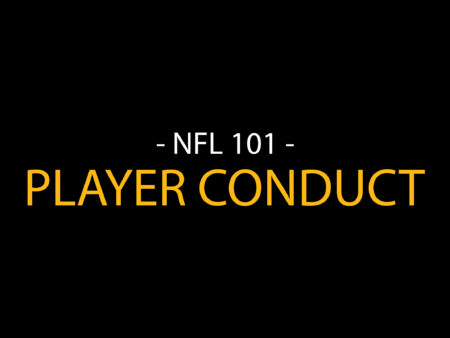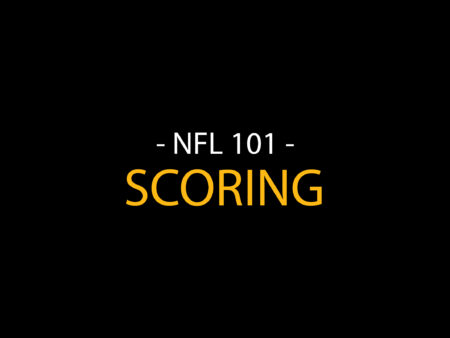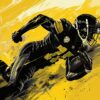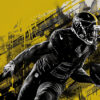Section 1: When is the Ball Alive?
Live Ball
Imagine the ball as the prince in a fairytale—it’s not really “alive” until the magical moment it’s legally snapped or kicked. This is when our story begins, each play’s opening act on the grand stage of NFL football. If someone jumps the gun before the ball is ready, the play remains a mere dream, waiting to be born.
Section 2: When Do We Yell ‘Dead’?!
Dead Ball Declared
The ball is declared “dead” (or the play is over) in scenarios that often cause players and fans alike to groan, cheer, or sigh in relief. Here’s when you can reset and catch your breath:
- Runner Down: If any part of the runner’s body except his hands or feet touch the ground when tackled, it’s lights out for that play.
- Progress Stopped: When a runner can’t move forward anymore because a wall of opponents stops him—consider that play dead.
- Quarterback Kneels: When the QB takes a knee, he’s basically saying “let’s take a quick breather,” and the play ends there.
- Self-Declared Down: If a player slides or kneels and makes no effort to move, he’s considered down; this isn’t just for avoiding hits, but also a strategy to waste time.
- Stepping Out: The sideline is lava for players – touch it, and the play dies.
- Pass Incompleteness: If a pass doesn’t find hospitable arms and hits the ground, that play is over.
- End Zone Touches: Kick the ball into the end zone without it being caught, and it’s a dead ball—this could mean a touchback or a field goal, depending on where and how it lands.
Special cases include when the ball or a player with the ball hits the ground due to a slide, when an erroneous whistle blows (oops!), and when the pigskin strikes a sky cam (because sometimes, technology gets in the way).
Section 3: Moving the Chains
New Series for Teams A and B
A new series of downs is a fresh start, think of it as hitting the reset button on your play console. Here’s when the offense gets to keep the ball and march on:
- Team A (usually the offense) keeps the ball if:
- They move the ball past the yard marker (achieve a first down).
- Penalties against Team B push the ball past the first down marker.
- They recover their own kickoff in play.
- Team B (usually the defense turned offense) takes over when:
- Team A fails to make the yardage needed on fourth down.
- They end up with the ball at the end of a play due to a turnover or a kick.
Forward Part of the Ball
Where the ball lands and stops, and which part of it is farthest forward, that’s what counts. This little detail can be the difference between keeping the drive alive or turning over the ball.
Section 4: Before the Snap Shenanigans
Setting the Stage
This part is about getting ready for the play:
- False Start: Like a nervous actor fluffing his lines, any offensive player who jumps before the play starts ruins the take, and it’ll cost the team 5 yards.
- Encroachment: If a defensive player gets too eager and crosses into the neutral zone making contact, that’s a no-no with the same 5-yard penalty.
- Neutral Zone Infraction: This is like encroachment’s sneaky cousin. No contact needed; just crossing the line is enough to draw the flag.
- Offside: Being offside is like being the kid caught on the wrong side of the hide-and-seek base when the seeker yells ‘Olly Olly Oxen Free!’
Each of these pre-snap mistakes costs the team yards and can give their opponents a slight edge.
Section 5: Proper Alignment
Offensive Team Setup
Football is a game of inches and precise positioning. The offense needs at least seven players lined up right at the line of scrimmage—mess this up, and it’s a penalty. No player can be out of bounds, and the arrangement of eligible and ineligible receivers must be legal.
Section 6: Let’s Get It Started – The Snap
Ball in Play and Snap Regulations
Finally, putting the ball in play:
- Snap Location: The ball is snapped where the last play ended unless a penalty dictates otherwise.
- Legal Snap: The snap must be one smooth motion—no tricks, no stalling.
- Snapper Restrictions: The player snapping the ball (usually the center) can’t mess about. Once he’s ready and the officials are in place, the ball must be snapped promptly without delay.
Each play starts with the snap, and how and where it happens can set the tone for what happens next.
Closing Thoughts
Understanding when the ball is in play and when it’s dead, along with the proper setup for each snap, is crucial whether you’re a player, a coach, or a fan. These rules ensure the game is fair, the play is clear, and everyone knows exactly when to watch closely or catch their breath. So next time you’re watching a game, keep an eye on these details—they’re what make football the strategic and exciting sport it is!
